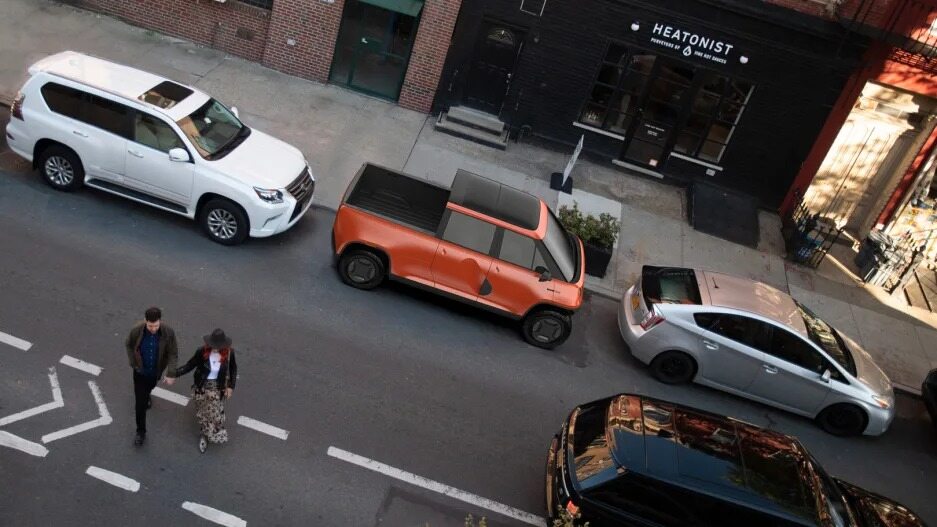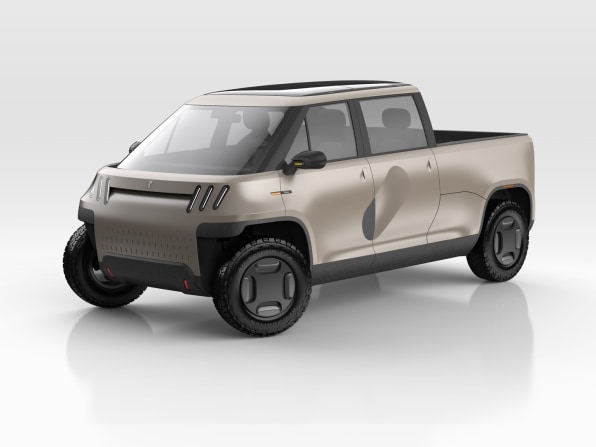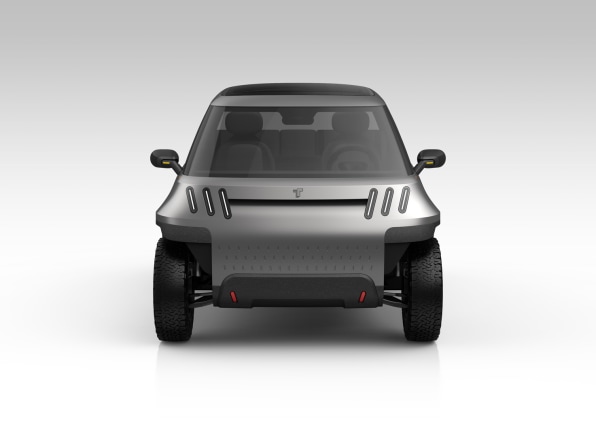- | 8:00 am
Telo is an EV pickup truck with a Mini Cooper footprint
Developed by ex-Tesla talent and product designer Yves Béhar, Telo wants to challenge Rivian with a new kind of EV truck.

It has the seating and storage of a Toyota Tacoma, squeezed into the footprint of a Mini Cooper. This is Telo, an EV pickup truck designed with a European sensibility—which aims to hit the market in two years for $50,000.
Industry veterans Jason Marks and Forrest North founded Telo to challenge the status quo of the automotive industry. Marks specializes in vehicle safety. He led the Autonomous Vehicles and Driver Assistance Systems test programs at National Instruments, and he developed systems that tested autonomous and assistive driving technologies for several major automakers. North is a battery expert who helped develop Tesla’s first battery pack before co-founding Mission Motors. While the company is now defunct, it developed one of the world’s first electric motorcycles before Mission’s core technologies ended up at places like Harley Davidson. The two enlisted Yves Béhar and his design firm Fuseproject to design the Telo inside and out.

Their vision is for a compact pickup truck that’s parkable in a city but ready for weekend adventures. In this sense, the pitch isn’t so different from products like the Ford Maverick or the aforementioned Tacoma. But after one glance at the Telo, you can see the similarities end there.
Telo has no front engine, as most critical components are hidden inside a big skateboard that makes up the bottom of the vehicle, a flat, all-in-one chassis, battery, and motor system atop of which the cabin is built. Whereas the F-150 Lightning features a “frunk” in this unused space, Telo pushes the driver forward, and repurposes this square footage for the cabin of the vehicle. (We’re seeing a similar approach from startups like Canoo and Amazon’s robo taxi Zoox.)
Marks notes that this approach should be safer for pedestrians, as conventional trucks and SUVs account for the vast majority of pedestrian fatalities—which researchers believes largely comes down to how difficult it can be to see pedestrians high up in a truck, especially when turning. Meanwhile, the promises that a flatter-front truck shouldn’t be less safe for drivers who get in a head-on collision. Telo’s 18 inches of mechanical crumple zones are designed to redistribute forces under the driver and should still pass crash testing. Even still, Marks teases other safety technologies he plans to work into Telo for the first time to ensure safety, like seats that can anticipate a crash and reposition themselves to mitigate impact.
“We talk to all these tier one automotive suppliers. They have a lot of programs, internally funded by giant automotive companies. They clearly have R&D budgets focused on making cool stuff that doesn’t make it [to market] for other reasons,” says Marks. “There’s probably five to six technologies we’ve seen in the past few months that we can integrate, that’s pretty much fully ready to go.”

A ‘EUROPEAN’ PICKUP TRUCK
Béhar led the design for the truck’s form factor, and his Swiss sensibilities on full display. “The whole story is building a sort of European pickup truck,” he says. Even from its name, Telo the bucks nomenclature conventions like terrain (Tundra, Ridgeline) and beastly power (Ram, Gladiator).
Head-on, Telo features an uncharacteristically friendly bell shape, instead of the “scary” front end he notes are in most pickups. “We didn’t want it to read ‘macho truck,’ but to have much more of a neutral stance—still with some sporty elements, but a more neutral, cuter style,” says Béhar.

At the three-quarter view, the Telo can give vibes of a VW bus (and by removing the wheels, I can almost see a train). The form isn’t as organic as many vehicles, though—most notably, the door handles feature a pill shape, which is echoed larger on the prominent oval vents you can see on the doors. (Much like a 1980s Ferrari, it’s an air intake that, in this case, cools the battery pack and improves aerodynamics.) I can’t help but see the influence of Béhar’s experience in high tech consumer products here. The Telo reads one-part vehicle, one-part gadget.
More cooling comes in form of the open wheel wells, which are molded in carbon fiber before being bonded to the aluminum frame. The battery pack that you don’t see was designed by North to provide roughly 350 miles of range per charge. While made from conventional cylindrical cells that have been used since the earliest days of lithium ion EVs (and before that, laptops), North says that it’s a particularly space-efficient design—roughly half the thickness of a Tesla battery pack—that’s architected to be easily produced on a single assembly line. Meanwhile, to keep other costs in check, the motor and drivetrain will be off-the-shelf components rather than developed from scratch.

“If you’re going 0-60 in 3 seconds, you might need to break the mold,” says Marks. “We’re going 0-60 in 4 seconds. Which is good enough.”
Instead of differentiating on performance, Béhar notes that the plan is to differentiate on experience. “I don’t mean to knock on the car industry, but it is not product, or user practicality-driven. It’s really, really marketing driven,” he says. “We’re really designing [Telo] the way you would do any product design. Focus on the experience. Focus on all those elements of the interior that make this unique configuration really comfortable.”
While we’ve yet to see how the interior will come together, Béhar’s unique take on the Telo’s truck bed makes the design a standout already. While the Telo has the footprint of a car, its bed can expand to a full 60”x60” (the same as a Tacoma, and larger than a Rivian). Telo’s trick is that the midgate separating the cabin and bed can fold down, along with the rear seats, to squeeze in bikes, surfboards, and wood sheeting. An integrated cover can pull over the back, turning the bed into a giant trunk. However, for those who want to relax in the open air, Béhar even teases that they could squeeze a third row of seating into the truck bed.
Telo is a fascinating design, but it will require significantly more development to bring to market, and even more to actually manufacture. The company plans to build the first 500 unites by hand over the next two years, and scale up mass production through a U.S.-based OEM within three. You can pre-order a Telo today for $152.





































